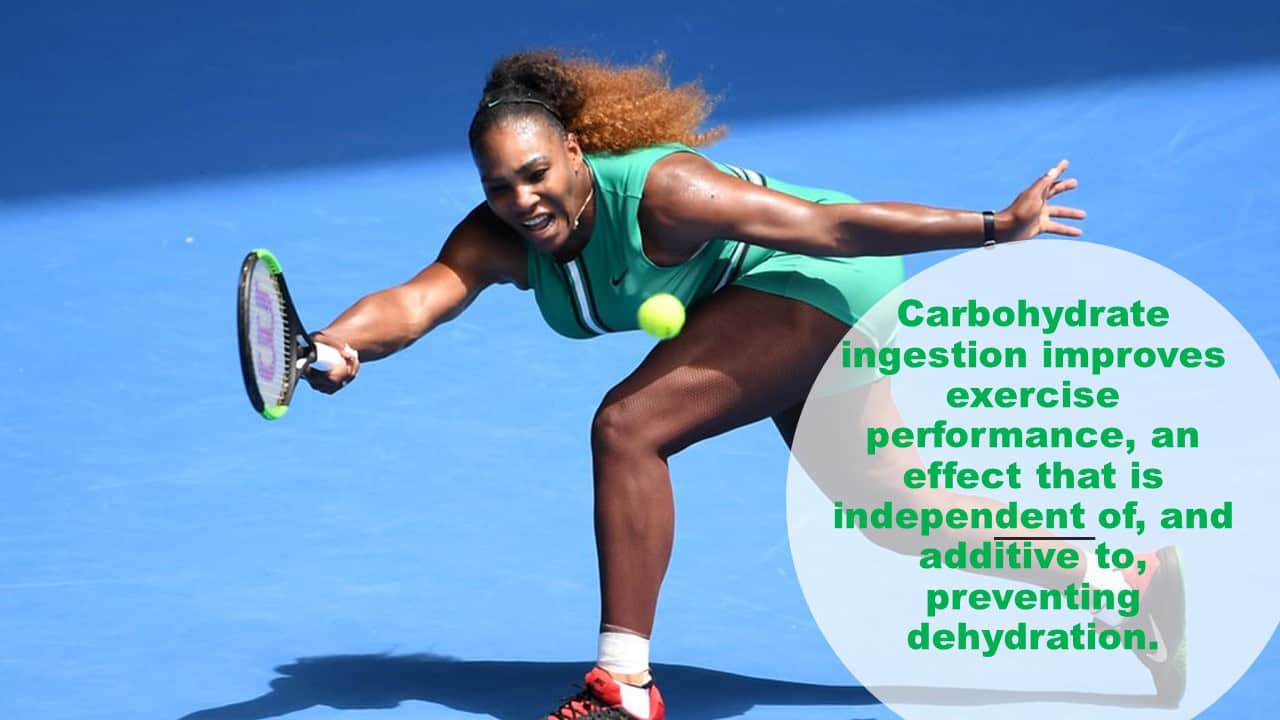Serena blows my mind. Here she is, the heaviest weight she has been for decades and despite the fact that she is now out of the Australian Open, her power, strength and tenacity was still able to bring her the results to get as far as she did. I’ve been watching her with interest to see how much fluid she consumes between sets. Because the more muscle mass and total body-weight you have, the more quickly you overheat and to survive in the Aussie heat playing tennis, you have to keep cool and keep your cool!
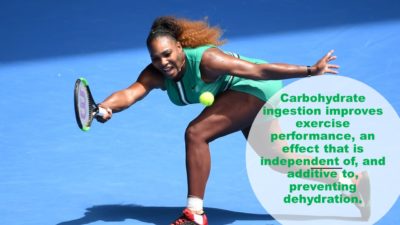 Fortunately Serena, known for her incredible outfits on court, also had a lot of her skin exposed. It helps to have skin exposed so that your body can cool down by sweating – unless you are in menopause that is. Because our skin is also losing oestrogen receptors, our sweat glands don’t function as well as they used to. It’s why exercising in the heat can be so much more problematic for women who are going through menopause. Many who I come across on my programmes and in my live events, find that they don’t cope as well as they used to with their exercise or sports. Having experienced this myself, I put on my sport science hat and now understand why.
Fortunately Serena, known for her incredible outfits on court, also had a lot of her skin exposed. It helps to have skin exposed so that your body can cool down by sweating – unless you are in menopause that is. Because our skin is also losing oestrogen receptors, our sweat glands don’t function as well as they used to. It’s why exercising in the heat can be so much more problematic for women who are going through menopause. Many who I come across on my programmes and in my live events, find that they don’t cope as well as they used to with their exercise or sports. Having experienced this myself, I put on my sport science hat and now understand why.
The skin is our largest organ. 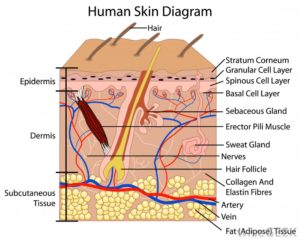 It is also full of oestrogen receptors that help our sweat glands to open more widely. As pre-pubescent young girls, we over-heated more readily because we didn’t have mature sweat glands. This is why sports science books are full of information about the dangers of children exercising in hot and humid conditions. Their body doesn’t get rid of heat very well because the sweat glands are still immature.
It is also full of oestrogen receptors that help our sweat glands to open more widely. As pre-pubescent young girls, we over-heated more readily because we didn’t have mature sweat glands. This is why sports science books are full of information about the dangers of children exercising in hot and humid conditions. Their body doesn’t get rid of heat very well because the sweat glands are still immature.
It’s the same with us as we transition through menopause and head into post-menopause. Fortunately, Serena and the other young females playing their hearts out in the Australian Open don’t have this problem. They still have oestrogen. But what Serena has, that differs from the other female athletes, is a lot of muscle mass and body weight to move efficiently around the court. In doing so, she invariably sweats more than her opponents, running the risk of over-heating more readily. And even for the best athletes in the world, the body hates heat.
As professional athletes, tennis players have their fluid and carbohydrate regime down to a fine art and for Serena, I hope that her Trainer has had her regime adapted for her increased muscle mass too. Because the first thing that dehydration causes is reduced power. I used to state a quote from the ‘bible’ of exercise and sport physiology teaching, ‘Wilmore, Costill & Kenny – Physiology of Sport & Exercise Science’, to students and this was, ‘Dehydrate a muscle by 3% and you lose up to 20% in power.’ 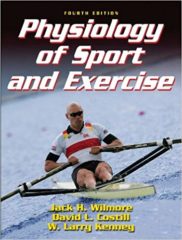 Because Serena has a lot more muscle mass than ever before, she is now compromising speed for power and if she is dehydrated, the power in her wilts away.
Because Serena has a lot more muscle mass than ever before, she is now compromising speed for power and if she is dehydrated, the power in her wilts away.
With exercise, tennis and heat on the mind and of course Australia with the current incredible heat-wave it’s in, you need to know that when body temperature rises too high, performance is reduced.
That’s why if you’ve been an exerciser for decades and you are used to exercising or playing sport outside, then it’s important to know that now that you’re in menopause, you need to change your fluid routine and your post-exercise cooling regime. It’s what I teach women to do in the MyMT Rebuild My Fitness 12 week online programme, [this differs from the Circuit-Breaker and Transform Me programmes because it just focuses on exercise]. I’ve put over 30 years of exercise and sport science knoweledge into this fabulous online programme called Re-Build My Fitness, which has information specific to us as we transition menopause. If you are overweight and struggling with sore joints and poor sleep, then make sure you come into my January promotion for the weight management ‘Transform Me’ programme first though. There are a lot of changes which affect our exercise tolerance when we move into a low oestrogen hormonal environment, but exercise is not effective for weight loss or performance if you aren’t sleeping or your joints and muscles are sore.
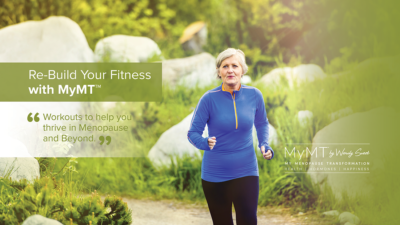
The increase in fatigue when we exercise or play sports in the heat is an impairment that is caused by both central and peripheral factors. For example, exercise in the heat increases the use of muscle glycogen (glucose) 10-fold, potentially hastening fatigue. Even with exercise lasting only an hour. This is why you do need some sugar/ glucose if you are out exercising in the heat, especially when you go for an hour or longer. Watch the tennis players, they all have water and another bottle filled with a carbohydrate liquid (freshly squeezed apple juice is just as good as the marketed sports drinks too if you add a bit of Himalayan Salt to it). The glucose liquid is readily absorbed from the stomach into muscles. And size matters too. Serena has more muscles to get the glucose to, so she needs to drink more than her smaller opponents.
The other thing we need to remember as low oestrogen prevents our sweat glands from operating the way they used to, is that when body temperature increases, brain function decreases. This is why we need glucose when we are exercising or training in the heat as well. Your brain needs sugar!
Optimal performance is possible only when dehydration and hyperthermia (over-heating) are minimized by ingesting ample volumes of fluid during exercise and by taking common-sense precautions in keeping cool.
Soaking the feet in cold, iced water is one such strategy after exercising in the heat and it’s a strategy that I promote in the other programmes to help control hot flushes. The soles of our feet have lots of nerve endings and sweat glands and as humans we have been designed to walk in bare-feet, which for those living in hot, humid countries, helps to keep us cool. Unfortunately, wearing shoes over our life-time, we have rapidly changed our ability to walk bare-foot!
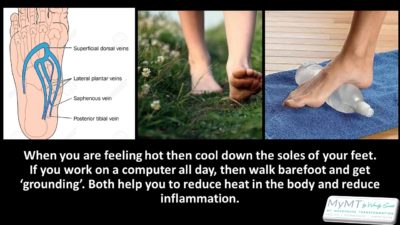 Recent research has demonstrated that consuming fluid in volumes approximating sweat loss maintains important physiological functions and significantly improves exercise performance, even during exercise lasting only 1 hour. This is why athletes weigh themselves before and after exercise in the heat. They need to replace their water loss first, before replacing food. Next comes carbohydrate ingestion which improves performance.
Recent research has demonstrated that consuming fluid in volumes approximating sweat loss maintains important physiological functions and significantly improves exercise performance, even during exercise lasting only 1 hour. This is why athletes weigh themselves before and after exercise in the heat. They need to replace their water loss first, before replacing food. Next comes carbohydrate ingestion which improves performance.
I’ll be watching the tennis players over the next few days. When athletes follow an aggressive fluid replacement and temperature regulation regimen, they prevent the pathway towards fatigue, followed by dehydration and heat-stroke. When a muscle is dehydrated by only 3%, athletes can lose up to 20% of their power. As a professional athlete and the best tennis player in the world of women’s tennis, I’m sure Serena knows this already. But if you are exercising in the hotter weather in Australia and New Zealand, I just wanted you to tuck this little thought away somewhere too.
– Drink at least 2 glasses of cold water up to 15 minutes before exercise in the heat if you are exercising less than 60 minutes. Longer than this and you need to take water with you and keep it cold. If you exercise for longer than 75 minutes in the heat, then you will also need an electrolyte replacement drink.
– Have some beetroot, celery, spinach and apple juice within 30 minutes after exercising to replace glucose and to improve blood vessel dilation. As I tell women on my programmes, beetroot and celery have compounds in them that help to dilate blood vessels and restore blood pressure after exercise.
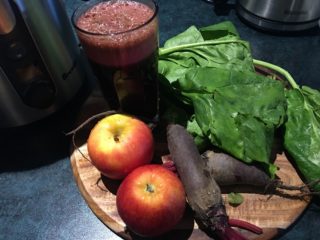 – Have a shower after your exercise and run cold water over the soles of your feet. The soles of the feet are important in heat regulation.
– Have a shower after your exercise and run cold water over the soles of your feet. The soles of the feet are important in heat regulation.
– Keep drinking at least 1 glass of cold water, every hour for 3 hours.
– Slow down and conserve energy at least 3 hours after exercise in the heat. Your body needs to recover. Let it.
This is just some of the information that I have for women to help them maintain their exercise passion and transition through menopause without feeling exhausted all the time. When we overheat, this increases inflammation and oxidative stress in cells and tissues, so exercising in the heat and being in menopause, with changing sweat glands, is a ‘double-whammy’ for women who, like me, have enjoyed exercising all their life. If we don’t get our exercise right and make the necessary adjustments for our changing hormones, we end up with sore muscles, aching joints and restless legs and night sweats. We are the first generation of women to go into menopause in the context of all the exercise and sports that we have participated in over the years, and research consistently shows that women in mid-life are most at risk of dropping out of exercise which is partly due to not sleeping and feeling exhausted, but I believe it’s partly to do with the fact that they don’t understand how to adapt their exercise to match their changing hormones in menopause.
I love the photos that come my way via the women in my Re-Build My Fitness group. With the Australian Tennis Open on my mind and the incredible heat that Australian women are having to cope with, this reminded me of the photo that Lydia shared with us recently … and as she says, “they are wallabies, not kangaroos”.
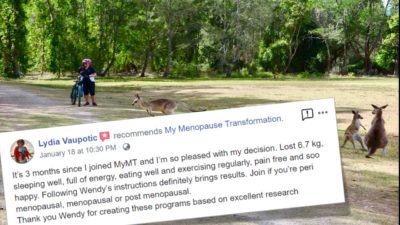
Wendy Sweet, PhD/ Women’s Healthy Ageing Researcher & MyMT Founder & Coach.
